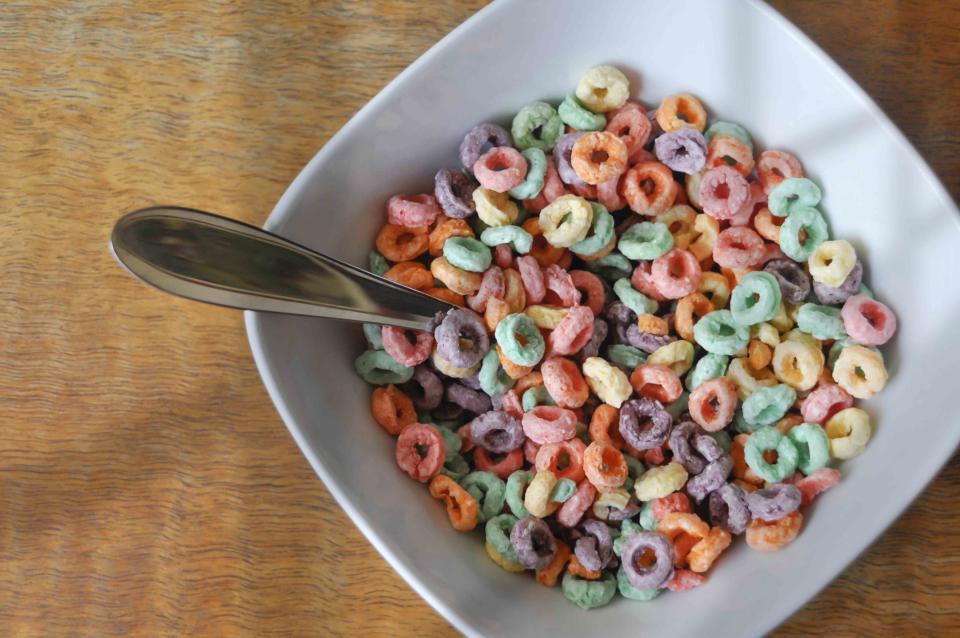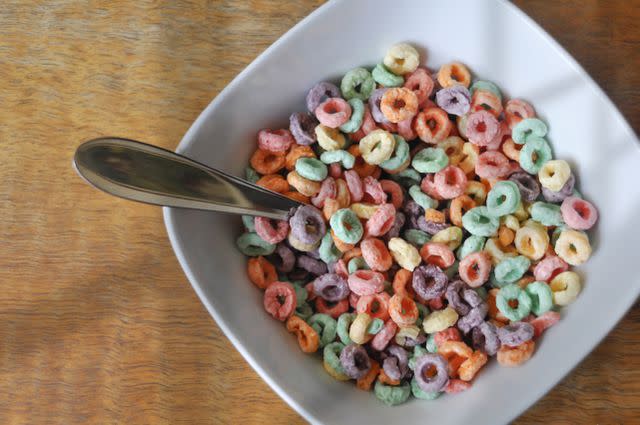Cereal Can Be a Key Source of Vitamin D Now
A new ruling from the FDA will make it easier to eat your vitamin D, and nutrition experts say it could help make up for a major deficiency in Americans.

More than 90% of American adults aren’t getting the vitamin D they need. Vitamin D is known as the sunshine vitamin because your body makes it when your skin is exposed to the sun. You can also get vitamin D from supplements and some foods—many of which are fortified with it.
Yet a new ruling from the FDA may make it easier to get vitamin D from food. In January, the FDA gave manufacturers permission not only to increase the vitamin D in breakfast cereals but also add it to grain-based bars like breakfast, granola, and cereal bars. So does that mean eating these products can get you to your daily vitamin D goal? It’s possible.
Related: 7 Foods High in Vitamin D to Add to Your Diet, According to Dietitians

The Skinny on Vitamin D
Vitamin D is an essential nutrient your body needs to stay healthy. “Without enough, your body can’t function properly,” says Ashley Kitchens, M.P.H., R.D.N., plant-based dietitian and owner of Plant Centered Nutrition. Vitamin D helps you absorb calcium, which is key for strong bones and teeth; helps regulate blood pressure and reduce the risk of certain types of cancer; aids with proper cell functioning; and plays a role in regulating cell growth and maintaining your immune system.
There are two primary kinds of vitamin D—vitamin D2 (or ergocalciferol) and vitamin D3 (or cholecalciferol). Both are beneficial in raising the vitamin D in your blood, though recent research is giving vitamin D3 a bit of an edge in its effectiveness at raising and maintaining blood levels of vitamin D.
Related: Smart Ideas for Getting More Vitamin D Right Now
The current Recommended Daily Allowance (RDA) of vitamin D for people aged one through 70 is 600 International Units (IU). There are three ways you can get the vitamin D you need, starting first with sunshine.
“For most people, sunshine is the best way to get adequate amounts of vitamin D,” Kitchens says. Of course, sun exposure doesn’t come without health risks, namely skin cancer, which is where supplements and food come in handy.
Vitamin-D rich foods include oily fish like sardines, wild mushrooms exposed to UV light, and vitamin D-fortified foods like plant milk, cow’s milk, orange juice, yogurts and cereals. While it can be tough to get enough D from food alone, hence the reason many turn to supplements, it can be done.
“You’d have to eat at least one serving of oily fish plus one to two servings of vitamin D-fortified foods to reach 600 IU,” says Karman Meyer, R.D.N., dietitian and author of The Everything DASH Diet Meal Prep Cookbook.
How Fortified Cereal Can Help You Meet Your Vitamin D Needs
Now enter the new FDA ruling, which allows cereal manufacturers to add up to 560 IU of vitamin D3 per 100 grams in breakfast cereals and 400 IU of vitamin D3 per 100 grams in cereal bars. A wise move? Yes.
“Eating vitamin D-fortified cereal could be a convenient and effective way to get in more vitamin D, especially if you’re having trouble reaching your daily goals,” Kitchens says. Splash a vitamin D-fortified milk on that cereal, and you’ll benefit even more, Meyer adds.
Just note, though, that fortified cereals probably won’t provide enough vitamin D alone.
“You’ll still have to include variety in your diet, get sun exposure and possibly take a vitamin D supplement,” says Kitchens, adding that many of her clients need to take 1,000 to 5,000 IU daily, depending on their current D levels, geographic location, skin pigmentation, and diet. Although increasing vitamin D fortification may improve the nutrient content of cereal, “it’s still a processed food and not considered particularly healthful.”
Because cereals are often low in fiber and protein, Meyer recommends looking for ones with five or more grams of fiber and 10 grams of protein per serving. Check added sugar levels, too, and choose one with the lowest amount. And if you’re worried about your vitamin D levels, a simple blood test will determine where you stand, so ask your doctor.
For more Better Homes & Gardens news, make sure to sign up for our newsletter!
Read the original article on Better Homes & Gardens.

